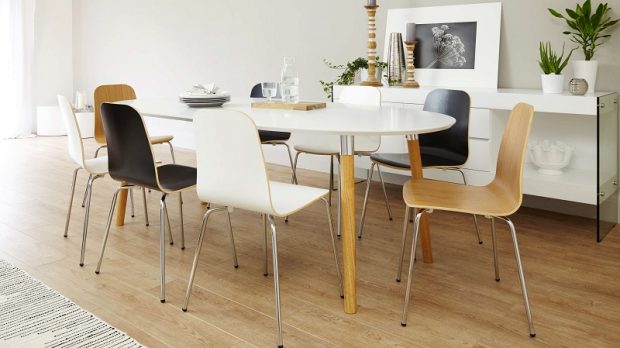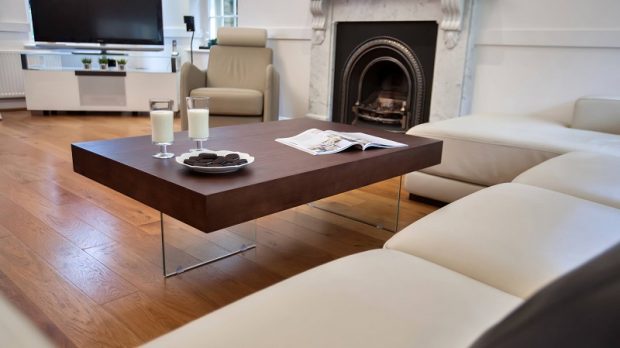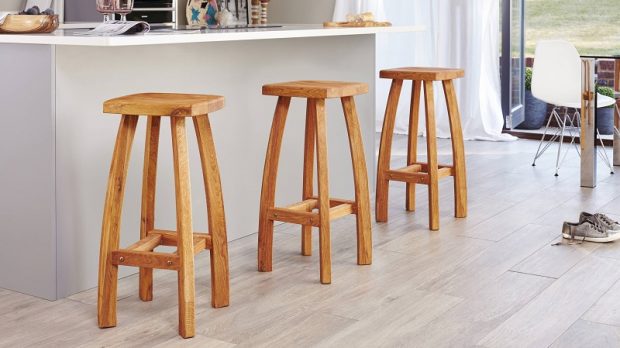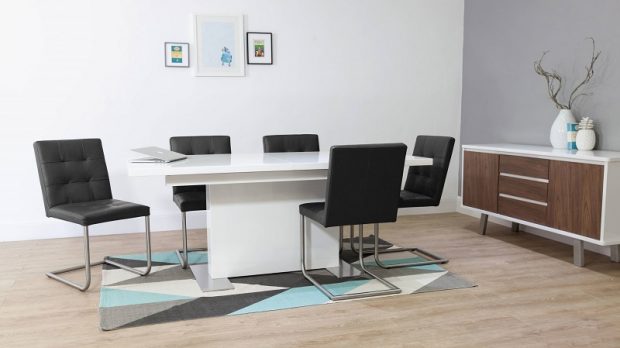When matching the wood furniture in a room it doesn’t mean that all the wood surfaces should share the same tone or try to come as close as possible to it. That’s just like walking into an art gallery to find all the paintings use the same color tone. Now unless you’re trying to stress out the dangers of totalitarian systems you should try to mix and match a little. Or a lot. If you really want the artist in you to come out swinging then you should be daring and unconventional with your touches and choice of colors and tones. Here are a few ideas that should point you the right direction.
Dining Table and Chairs
Now it should go without saying that the dining table and its chairs should share the same tone. It says so in every design textbook. But this is one rule you should really try to mess with. Instead of using the same tone how about using complementary tones? One color rules all is a good recipe for drab furniture. Strive for colors that go well together rather than different shades of the same surface tone. Remember you’re creating a narrative here and the pieces you bring to your home should fit into your narrative. As long as one or more pieces don’t stick out and scream at you everytime you enter the room, then you’ve pulled it off well. Consider the dining table and chairs in the picture above. Even though there are at least three different wood surface tones in this set, they all play nicely with each other. There’s harmony in the way the oak surfaces complement each other. Think of that the next time you go shopping for a dining set.
Focus on the Undertones
When you think mahogany, oak, rosewood, and walnut, what is the first thing that comes to mind? Grain. It’s subtle, integrates well and has amazing undertones that are easy to identify. And this should be your key. The undertone is when different pieces seem to share the same wood temperature. And temperature can either be warm or cold. In the case of wood, warm undertones range from yellow to orange, and red. While the cold temperature wood appears gray. There are also neutral undertones which give off a beige hue. When in doubt choose neutral undertones because they’re easy to match. They go well with warm temperature wood finishes, cool ones, and neutral as well. Sometimes you can’t tell the undertone of a piece in front of you. Here’s a tip. Find the palest grain in the surface and focus on it for a few seconds. It will tell you whether this undertone is cool, warm, or neutral. You could also try to take a few steps back and look at the piece from a distance. The hue it reflects would be easier to identify that way.
Matching the Oak Bar Stool
An oak bar stool is a very practical piece of furniture to have in your home. You can use it in the kitchen or as a breakfast bar stool. They look elegant, can fit in any context you place them and are easy to repurpose. It is no wonder they’re popular and people tend to place them in the most surprising combinations and settings. And since they’re made of natural oak they are easy to match with any piece with an oak finish that either has the same tone or complementary undertones. Place them against a side table or at the corner of dining set with oak surface and you got yourself a match made in heaven.
Your Dominating Tone
Just as using one uniform tone is only good for creating a drab atmosphere, so is using the same amount for each tone in your place. Three ebony shelves countered by the three rosewood cabinets which the three natural oak chairs bring balance to. This is not balance. It’s just plain boredom. What is wrong with this picture? It is all nice and proper. You need a little bit of chaos to add life to the place and create powerful interactions between the pieces. What you need is to have a dominating tone where the other tones seem to be resisting, plotting against, or maybe they have a secret working relationship that is not visible but can be felt. Your dominant tone can be the flooring or a rather large wooden surface such as a dining table. Now the other pieces would try to subtly undermine that dominant tone. Which is good because the dramatic effect will make the pieces come to life.
When matching wood furniture, remember to look past conventional ideas and textbooks. Going for the safe choice and tried and tested concepts will not give you the result you want. Be daring and go with your instinct.
The post How To Match Wood Furniture appeared first on YourAmazingPlaces.com.






No comments:
Post a Comment